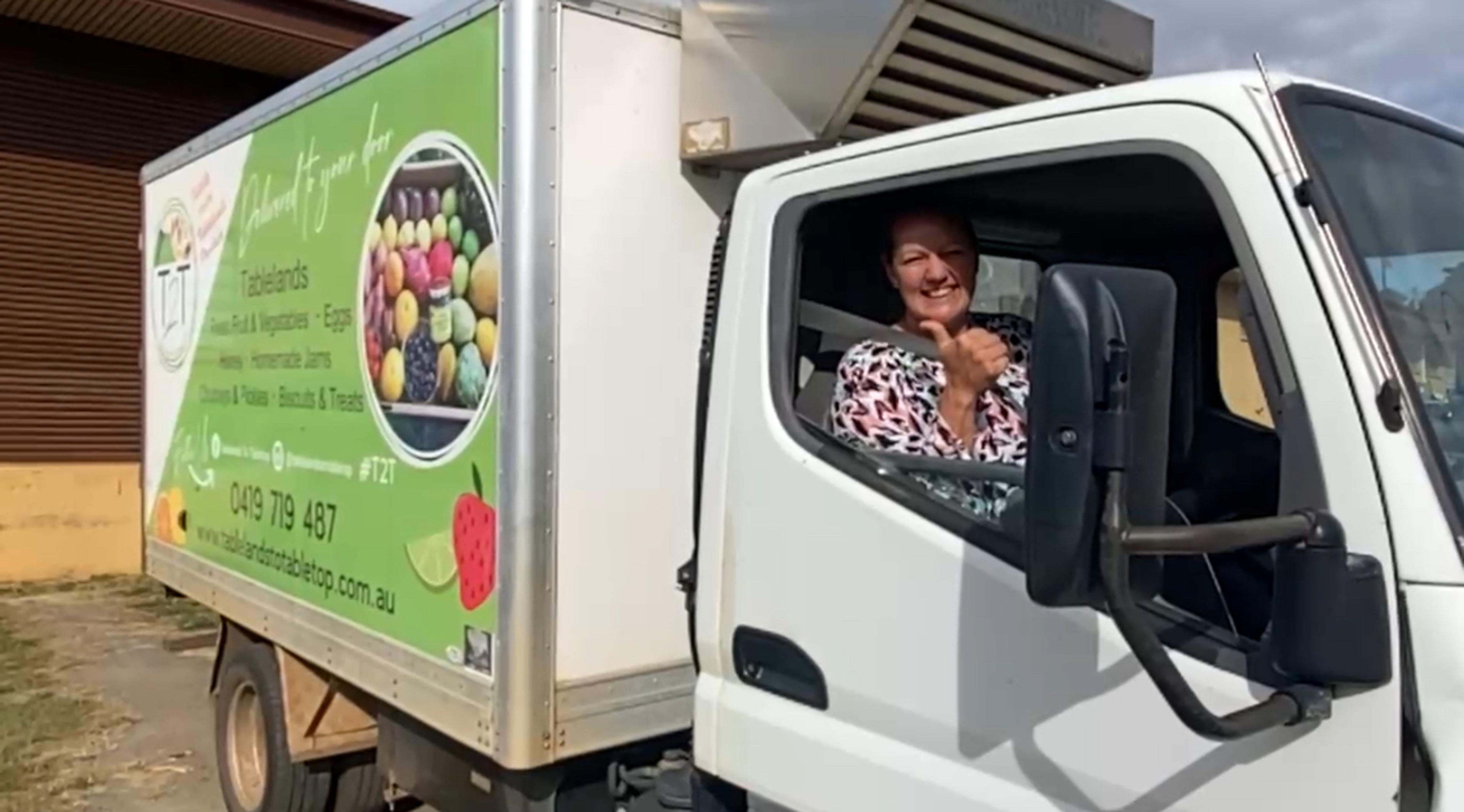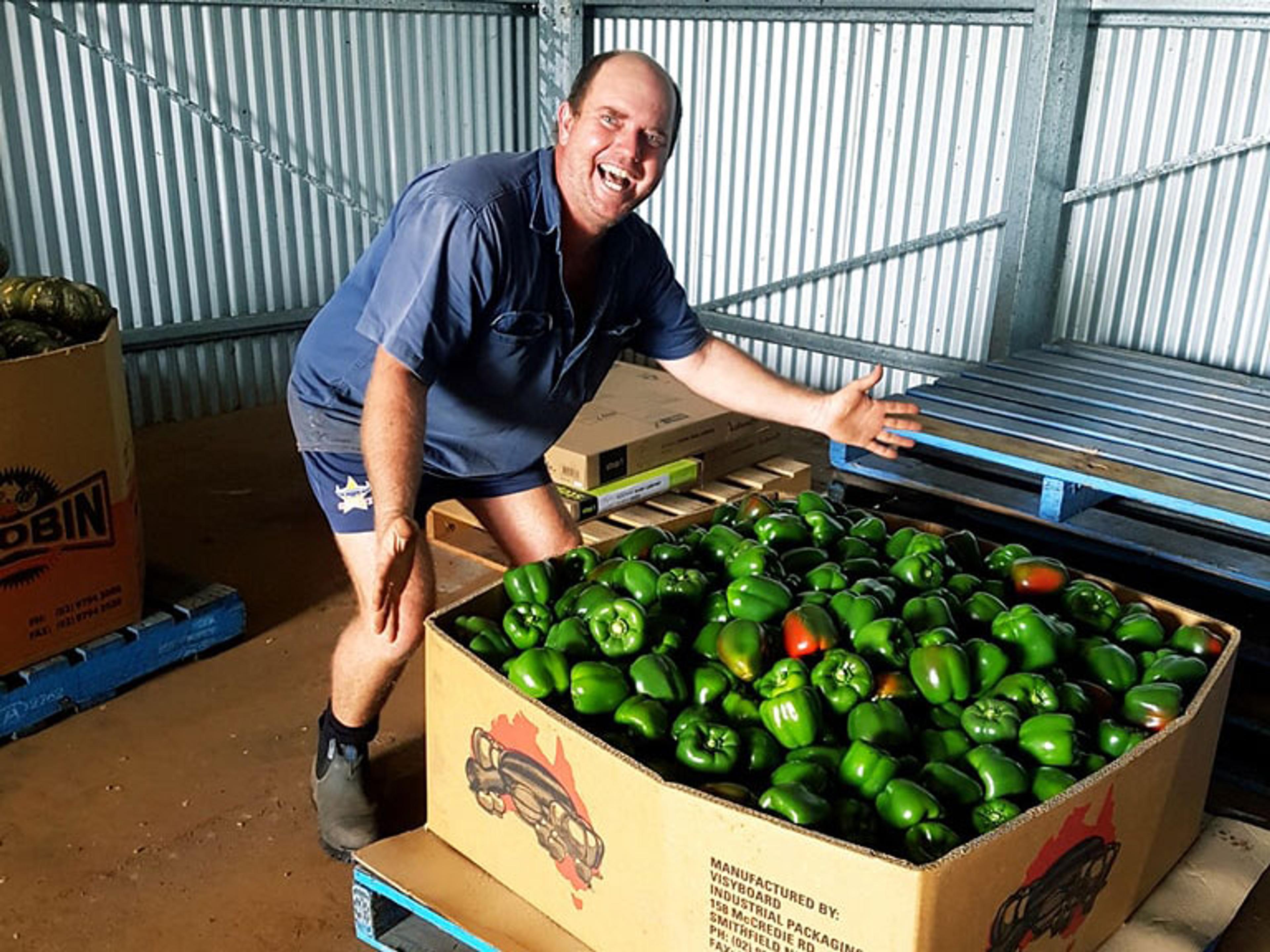Meet Angela Nason: Champion for Local Food in Far North Queensland
Angela Nason (picture above), a fourth-generation farmer from Mareeba, has deep roots in Far North Queensland’s farming community. Through her initiative, Tablelands to Tabletop, she’s helping reshape how locals access fresh, locally grown produce. From the challenges faced by small farmers to the joys of connecting with her community, Angela shares her passion for supporting local food and her vision for a more connected and resilient region.
Read on to discover what drives Angela, the advice she has for food lovers, and the unique produce that makes FNQ a true food bowl.
How long have you lived in FNQ?
I was born and raised in Mareeba 41 years ago, with a ten-year gap when I travelled in central Queensland and Darwin. I met my husband in Emerald, and we returned home to Mareeba to raise our children.
What has influenced you to become a local food advocate?
I am a fourth-generation farmer, and my kids are fifth generation. My great grandparents settled here in Mareeba in 1930 and my grandmother was born in 1931. My great grandparents grew food for our community, as did my grandparents, my parents and now my own family. You can say it is in our blood!
Over the last 30-40 years, our food systems have changed to supermarket chain monopolies. This is to the detriment of most farmers. My family and friends are farmers too, and during COVID times, it got tough. The chain was disrupted, and Tablelands to Tabletop happened because we needed to find a market for my family's limes. It kind of just fell into my lap. People saw what I was doing to connect consumers to our local produce and other farmers started asking me to help them. Our community has come on board to support this initiative.
What is your favourite part of this role?
Talking to the community and having a yarn with the foodies in my shop. Some are on a budget and trying to get by, especially pensioners. Many are passionate foodies who understand the importance of fresh, local produce for its health benefits. It is the face-to-face relationships I enjoy and the excitement we share for nutritious food.
Why is working with farmers important to you?
Firstly, they are my family and friends; we are part of the same farming community. For the last ten years, there has been a push for supporting local businesses because many family-run businesses - independent grocers, butchers, bakeries, and the like - are shutting their doors or are close to it. They can’t compete with supermarkets' so-called convenience and subsidised pricing. But these small businesses are made up of the mums and dads, the real people in our communities.
It is a ripple effect in small towns. When local businesses thrive, they put the money back into their sporting groups, employing locals and circulating dollars through the pockets of other local businesses.
We want our children to be able to stay here in our smaller regional towns and cities. If locals supported locals more, we would strengthen our shared economy and have a more resilient food system. My role is shortening the food chain in our region so we truly have access to nutrient-dense fresh food and the farmers are looked after!
What excites you about the produce in our region?
Our region is a food bowl with hundreds of varieties of fruit and veg grown in different climates and on varying landscapes. There are so many tropical fruits! It's easier to explain what doesn't grow here than all the things we can and do grow.
What challenges do you face?
We grow food for the rest of Australia and export two-thirds of this produce. Yet, locals in Far North Queensland pay for freight twice, eating produce 8 + days old after it travels south and back. This is costing us money and our health, and dismantling our community. I see freight costs as a big challenge. I get calls from remote communities in Weipa, Karumba, Georgetown, Bamaga, Mt Garnet, and Jullatin, who need fresh produce. There are reports of pumpkins costing $30 at their supermarkets! Their local supermarkets are getting food from Brisbane markets that are weeks old and it's overpriced after all that freight that has to be added on top.
I am doing my best to organise deliveries to hubs for coordinated freight of affordable local food. We need more local food hubs and people to set them up and manage them in these areas—like service stations or other central points for distribution. Then there’s the challenge of the wet season, when roads are cut off and barge deliveries are costly. City folk get public transport subsidies, but we need support with refrigerated freight costs for our remote regions, which are affected the most.
What advice would you give to foodies interested in the best fresh food?
I get calls from people in Mission Beach, Innisfail, Cooktown, and across the region looking for locally grown produce. I recommend finding the nearest independent grocery stall or foodie hub and supporting them—this is the best way to access local produce. We can easily connect them with food grown on the Tablelands to supply their areas. We are a wholesaler working directly with local farmers to provide retailers with produce grown in FNQ. If your local shop doesn’t have it, ask them to stock it!
What is your favourite recipe right now for seasonal produce?
Pumpkin soup because I am a pumpkin farmer's daughter! Sweet potato, cream, a sprinkle of parmesan cheese and a lashing of butter, salt and pepper.
Learn more about how you can support local food via our Ethical Food and Fibre Guide. It's packed full of resources and actions you can take.

